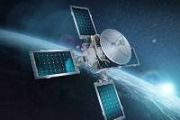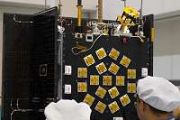
Copernical Team
Virtual engagement opportunities for Northrop Grumman's 21st Resupply Mission
 NASA invites the public to join virtual activities and events leading up to the launch of Northrop Grumman's 21st commercial resupply services mission to the International Space Station. The launch is scheduled for 8:31 p.m. EDT on Friday, Aug. 10, 2024, from NASA's Wallops Flight Facility on Wallops Island, Virginia.
The public can register to virtually attend the launch. NASA's virtual g
NASA invites the public to join virtual activities and events leading up to the launch of Northrop Grumman's 21st commercial resupply services mission to the International Space Station. The launch is scheduled for 8:31 p.m. EDT on Friday, Aug. 10, 2024, from NASA's Wallops Flight Facility on Wallops Island, Virginia.
The public can register to virtually attend the launch. NASA's virtual g One year on 'Mars': Inside NASA's ultra-realistic isolation study
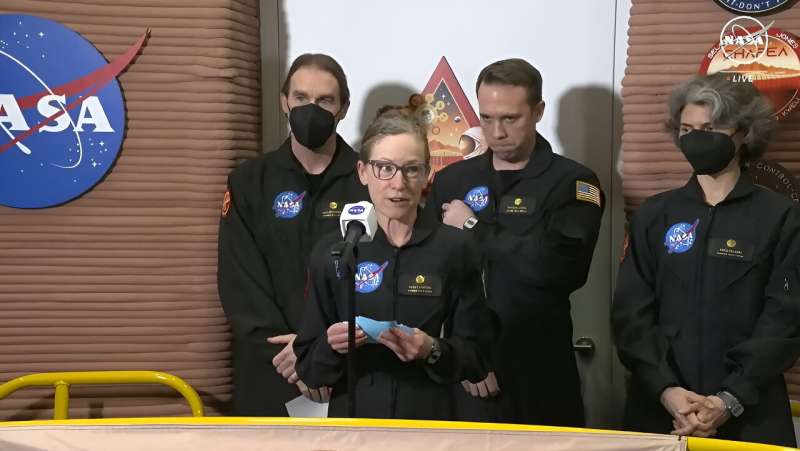
Sealed inside a habitat in Texas and cut off from the outside world for over a year, Kelly Haston was the commander of a first-of-its-kind simulation for NASA to prepare for a future mission to Mars.
From conducting mock "Marswalks" to tending to a vertical garden, and occasionally grappling with boredom— Haston expressed pride in advancing the cause of space exploration while admitting the experience made her reconsider the reality of life on the Red Planet.
"Going to space would be an amazing opportunity," the 53-year-old biologist told AFP.
ULA launches top-secret Space Force payload on Atlas V rocket
 The United Launch Alliance saw its Atlas V rocket liftoff from Florida for a national security mission on Tuesday morning.
The Atlas V lifted off from Launch Complex 41, south of Kennedy Space Center, at 6:45 a.m. EDT on Tuesday, carrying a top-secret payload for the U.S. Space Force.
"Payload fairing jettison is confirmed by Atlas V from the edge of space to expose the spacecraf
The United Launch Alliance saw its Atlas V rocket liftoff from Florida for a national security mission on Tuesday morning.
The Atlas V lifted off from Launch Complex 41, south of Kennedy Space Center, at 6:45 a.m. EDT on Tuesday, carrying a top-secret payload for the U.S. Space Force.
"Payload fairing jettison is confirmed by Atlas V from the edge of space to expose the spacecraf Repair kit for NASA's NICER mission heading to space station
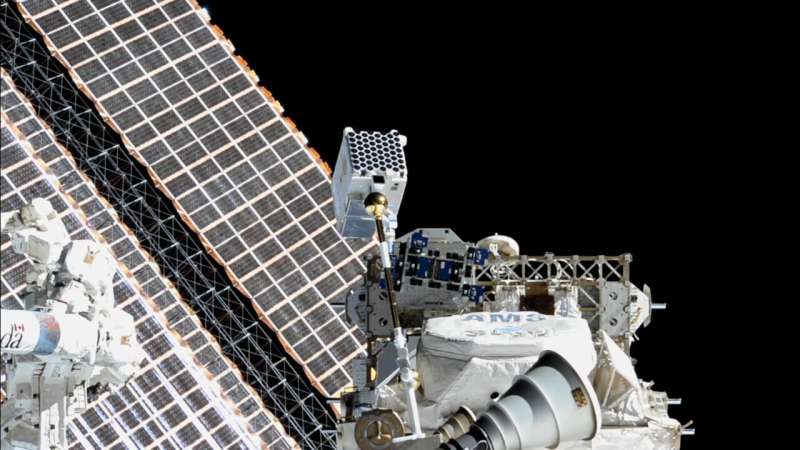
NASA will deliver a patch kit for NICER (Neutron star Interior Composition Explorer), an X-ray telescope on the International Space Station, on the agency's Northrop Grumman 21st commercial resupply mission.
Boeing says Starliner hot fire test on ISS went well with return date decision coming up
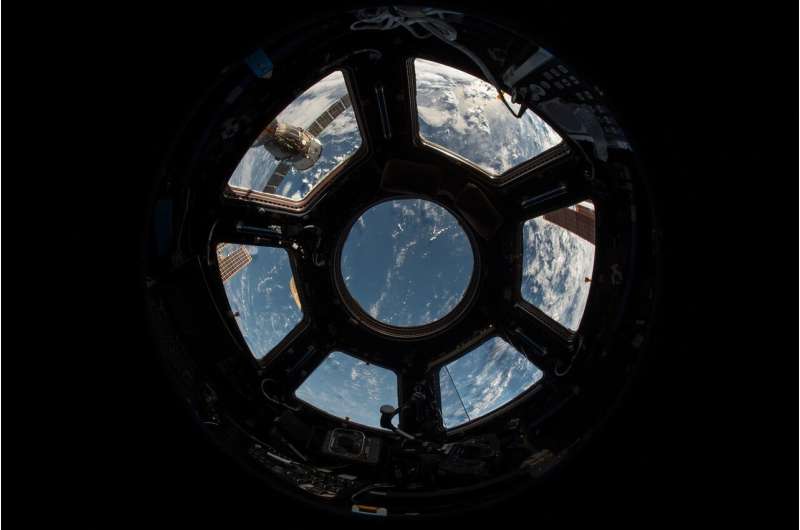
As Boeing's Starliner nears two months in space, teams performed a hot fire test of thruster performance and helium leaks on the spacecraft over the weekend to help inform the decision of when the spacecraft will come home and if its two NASA astronaut passengers will be coming with it.
Boeing announced in a press release the test of the Starliner's Reaction Control System (RCS) thrusters was performed Saturday afternoon while it was docked to the International Space Station. Teams with NASA and Boeing also monitored the helium system for the Crew Flight Test mission.
"Both teams were very happy with the results," said NASA's Starliner flight director Chloe Mehring in the press release.
The spacecraft arrived at the ISS on June 6 one day after launching from Cape Canaveral Space Force Station atop a United Launch Alliance Atlas V rocket with NASA astronauts Butch Wilmore and Suni Williams on board.
Dubbed the Crew Flight Test mission, the astronauts are amid the first crewed flight of the spacecraft as part of Boeing's efforts to have it certified for use alongside SpaceX's Crew Dragon spacecraft to ferry astronauts to and from the ISS as part of NASA's Commercial Crew Program.
A new path to creating element 116 paves the way for heavier atoms
 Scientists at the Department of Energy's Lawrence Berkeley National Laboratory (Berkeley Lab) have a notable history in element discovery, being credited with 16 of the 118 known elements. Recently, they've taken a critical step towards creating a new one: element 120.
An international team led by Berkeley Lab's Heavy Element Group announced the production of superheavy element 116 using a
Scientists at the Department of Energy's Lawrence Berkeley National Laboratory (Berkeley Lab) have a notable history in element discovery, being credited with 16 of the 118 known elements. Recently, they've taken a critical step towards creating a new one: element 120.
An international team led by Berkeley Lab's Heavy Element Group announced the production of superheavy element 116 using a Scientists examine Earth's early life and environmental interactions over 500 million years
 The atmosphere, ocean, and life on Earth have interacted over the past 500 million years, creating conditions that supported early organisms. An interdisciplinary team has detailed this co-evolutionary history in a perspective article published in the multidisciplinary open-access journal National Science Review (Oxford University Press, Impact Factor 20.7).
"One of our tasks was to summar
The atmosphere, ocean, and life on Earth have interacted over the past 500 million years, creating conditions that supported early organisms. An interdisciplinary team has detailed this co-evolutionary history in a perspective article published in the multidisciplinary open-access journal National Science Review (Oxford University Press, Impact Factor 20.7).
"One of our tasks was to summar Azimuth Space Program Joins Special Warfare Orientation
 As the largest commissioning source for the Space Force, the Academy offers an array of space-related programs. This summer, cadets joined their ROTC peers for the third consecutive year for the Azimuth space education and training program. During the three-week session, participants visited commercial industry partners, launched rockets with the Blue Horizon Rocketry Club, operated satellites w
As the largest commissioning source for the Space Force, the Academy offers an array of space-related programs. This summer, cadets joined their ROTC peers for the third consecutive year for the Azimuth space education and training program. During the three-week session, participants visited commercial industry partners, launched rockets with the Blue Horizon Rocketry Club, operated satellites w SynMax lands NGA pilot project for advanced geospatial MDA tool Theia
 SynMax, a leader in geospatial analytics, has secured a pilot project from the National Geospatial-Intelligence Agency (NGA) for its advanced Maritime Domain Awareness (MDA) tool, Theia. This state-of-the-art tool leverages extensive maritime data from Planet Labs PBC (NYSE: PL) and integrates over ten key maritime data sources, powered by SynMax's proprietary AI.
"Theia marks a significan
SynMax, a leader in geospatial analytics, has secured a pilot project from the National Geospatial-Intelligence Agency (NGA) for its advanced Maritime Domain Awareness (MDA) tool, Theia. This state-of-the-art tool leverages extensive maritime data from Planet Labs PBC (NYSE: PL) and integrates over ten key maritime data sources, powered by SynMax's proprietary AI.
"Theia marks a significan 
















